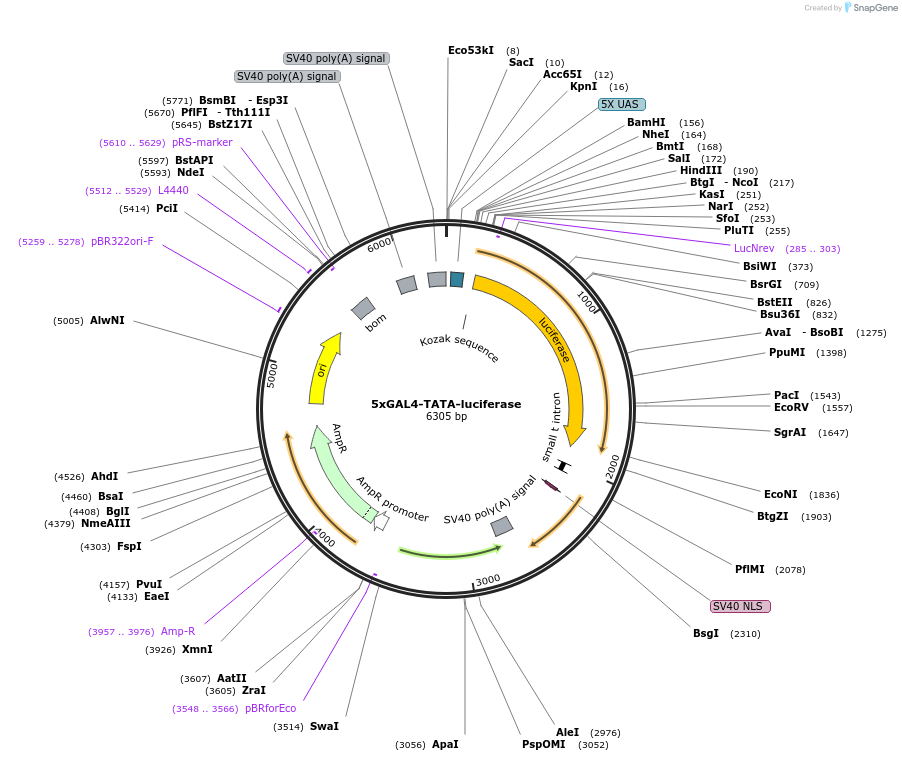-
PurposeLuciferase reporter gene for factors with GAL4 DNA binding domains
-
Depositing Lab
-
Publication
-
Sequence Information
Ordering
| Item | Catalog # | Description | Quantity | Price (USD) | |
|---|---|---|---|---|---|
| Plasmid | 46756 | Standard format: Plasmid sent in bacteria as agar stab | 1 | $89 | |
Backbone
-
Vector backbonepSV232AL-AD5
- Total vector size (bp) 6300
-
Modifications to backbonedelete SV40 promoter and add 2xSV40 polyadenylation sits, 5xGAL4 binding sites and a minimal TATA promoter upstream of luciferase
-
Vector typeLuciferase
Growth in Bacteria
-
Bacterial Resistance(s)Ampicillin, 100 μg/mL
-
Growth Temperature37°C
-
Growth Strain(s)DH5alpha
-
Copy numberUnknown
Gene/Insert
-
Gene/Insert nameLuciferase
-
SpeciesFirefly
-
Insert Size (bp)1729
- Promoter minimal TATA
Cloning Information
- Cloning method Unknown
- 5′ sequencing primer TGTGTCAGAGGTTTTCACCGT
- 3′ sequencing primer CGAAAAGTGCCACCTGACGTCT
- (Common Sequencing Primers)
Resource Information
-
A portion of this plasmid was derived from a plasmid made byDR Helinski University of California San Diego
-
Articles Citing this Plasmid
Terms and Licenses
-
Academic/Nonprofit Terms
-
Industry Terms
- Not Available to Industry
Trademarks:
- Zeocin® is an InvivoGen trademark.
Depositor Comments
de Wet et al, MCB, 7: 725-737, 1987.
Note that there are some minor discrepancies between Addgene's quality control sequence and the depositor's assembled sequence. These differences should not affect plasmid function.
These plasmids were created by your colleagues. Please acknowledge the Principal Investigator, cite the article in which the plasmids were described, and include Addgene in the Materials and Methods of your future publications.
-
For your Materials & Methods section:
5xGAL4-TATA-luciferase was a gift from Richard Maurer (Addgene plasmid # 46756 ; http://n2t.net/addgene:46756 ; RRID:Addgene_46756) -
For your References section:
Differential activation of CREB by Ca2+/calmodulin-dependent protein kinases type II and type IV involves phosphorylation of a site that negatively regulates activity. Sun P, Enslen H, Myung PS, Maurer RA. Genes Dev. 1994 Nov 1;8(21):2527-39. 10.1101/gad.8.21.2527 PubMed 7958915







